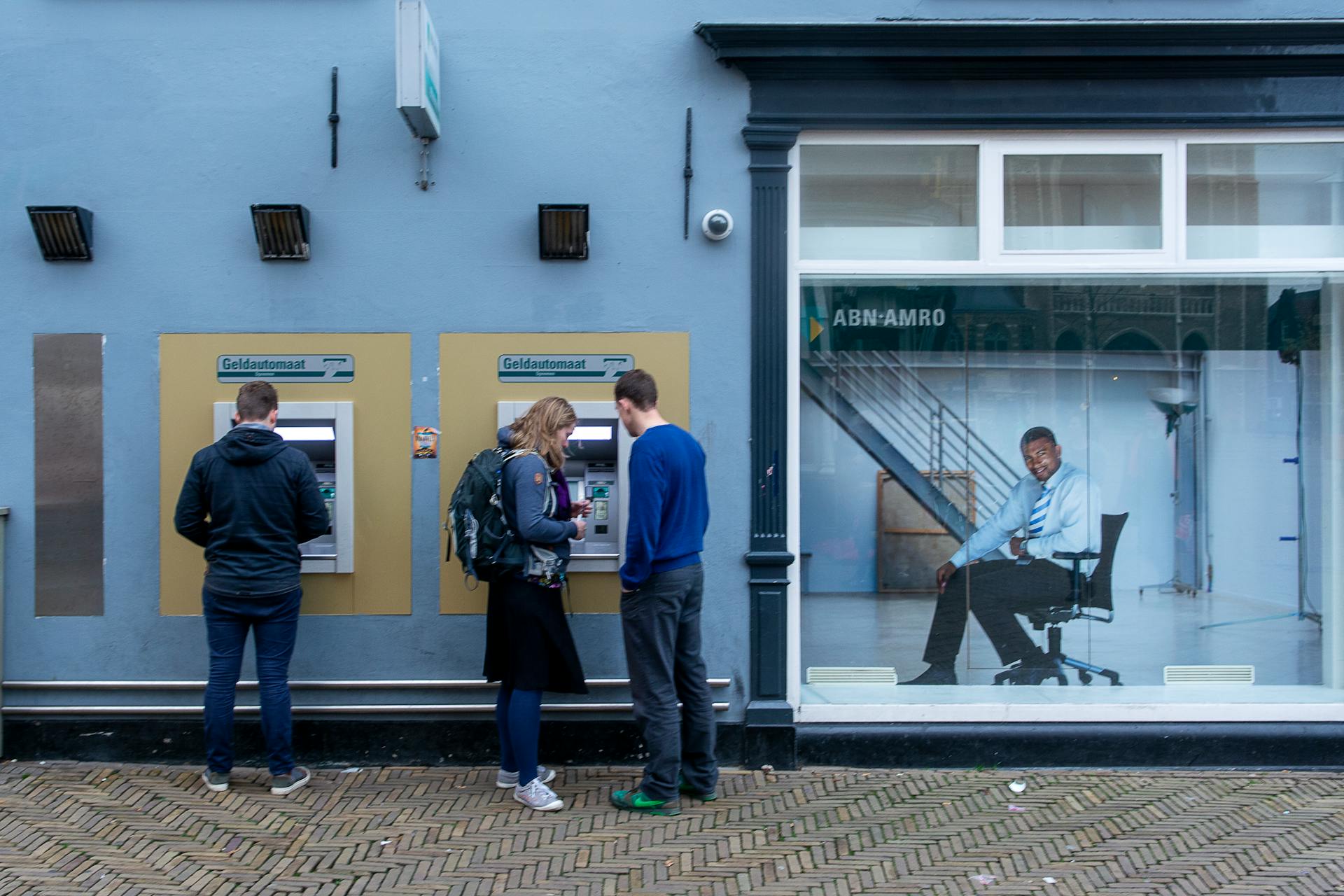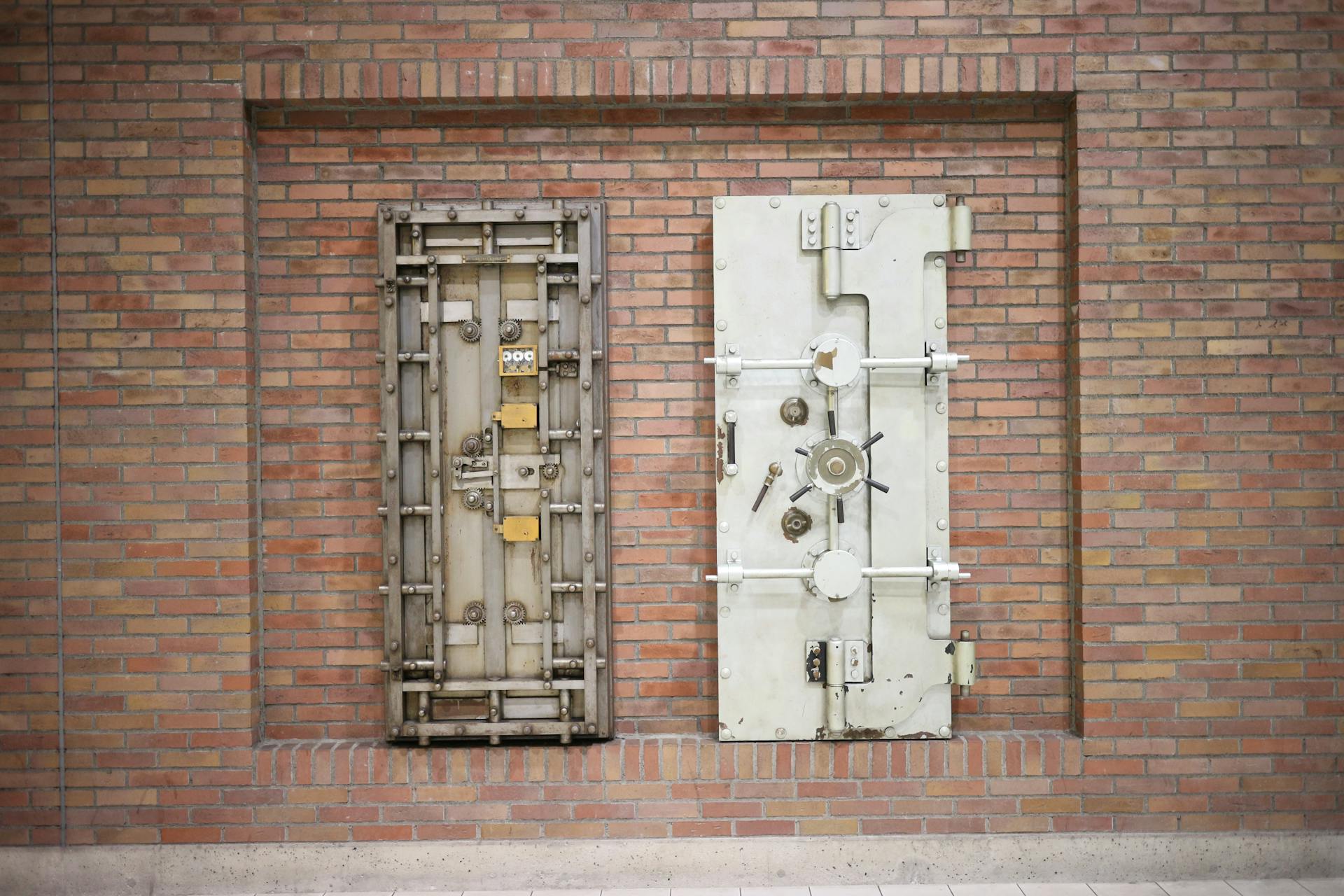
Bank vault room security and design principles are crucial to protect valuable assets. A bank vault room typically has a reinforced door made of steel or cast iron.
The door is designed to withstand forced entry and is often equipped with a combination lock or electronic lock. This lock is usually secured with a deadbolt or other locking mechanism.
A bank vault room is usually located in a secure area of the bank, such as a basement or a dedicated vault area. This location helps to prevent unauthorized access.
The walls, floor, and ceiling of a bank vault room are often made of reinforced concrete or steel to provide additional security.
Additional reading: What Does the Lock Mean on Venmo
What Is a Vault Room?
A vault room is a secure, enclosed space designed to protect valuable items and sensitive information from unauthorized access.
Typically located within a bank or financial institution, a vault room is equipped with advanced security features to safeguard against theft, tampering, and data breaches.

Vault rooms are often made of thick, reinforced steel or concrete to prevent breaking and entering.
Some vault rooms even have advanced alarms and motion sensors to detect any suspicious activity.
These security measures ensure that the contents of the vault room remain secure and confidential at all times.
Vault rooms can be used to store cash, jewelry, precious metals, and other high-value items, as well as sensitive documents and data storage devices.
Curious to learn more? Check out: Synchrony Bank Rooms to Go Credit Card
Design and Security
Bank vaults are custom-designed to meet the specific needs of each bank, taking into account factors like size, shape, and security features.
Modern bank vaults are constructed using steel-reinforced modular concrete panels, which are engineered for maximum strength and crush resistance.
A 3-inch thick panel of specialized concrete can be up to 10 times stronger than an 18-inch panel of standard concrete, making it a game-changer in bank vault design.
These panels are made with a special proprietary blend of concrete and additives that provide extreme strength, allowing for thinner walls that are just as secure as their thicker counterparts.
There are even public examples of vaults withstanding a nuclear blast, including the Teikoku Bank in Hiroshima, where two Mosler Safe Company vaults survived the atomic blast with all contents intact.
UL Rating Equivalent

Class 3 vaults are equivalent to TRTL-120X6, providing a high level of security and protection.
Understanding the UL rating equivalent is crucial when selecting a vault for your security needs.
The UL rating equivalent is a measure of the vault's ability to withstand various threats, including fire, explosions, and impact.
Here's a quick reference guide to help you understand the UL rating equivalent:
In addition to the UL rating equivalent, it's also important to consider the benefits of modular vault panels, such as rapid installation and true portability.
Lock
A vault door's lock is a crucial security feature that prevents unauthorized access. It's usually mounted on the inside of the door and can be a combination lock, a two-piece key lock, or even a time lock.
Combination locks are very common, often using a mechanical device or a combination of both mechanical and electronic mechanisms. This makes certain safe-cracking techniques very difficult.
Some high-end vaults employ a two-piece key, which consists of a long stem and a short stamp. These components should be safeguarded separately and joined to open the vault door.
Intriguing read: Capital One 360 2 Factor

Dual control combination locks have two dials controlling two locking mechanisms for the door. This requires two people to cooperate to open the door, as no single person is given both combinations.
A time lock is a clock that prevents the vault's door from opening until a specified number of hours have passed. This is still a "theft proof" lock system that's been around since the late nineteenth century.
The locking mechanism of a vault door can be complicated by its sheer thickness and strength. Many safe-cracking techniques may not be effective due to these factors.
Here are some common types of lock mechanisms used in vault doors:
- Combination lock
- Two-piece key lock
- Dual control combination lock
- Time lock
Components
A bank vault room is constructed with robust materials, including reinforced steel and concrete, ensuring unparalleled strength and durability. This combination of materials provides a secure environment for storing cash, documents, and other valuables.
The materials used in a bank vault room can vary, but some common components include steel plates, concrete, steel bars, fireproof materials, and metal fibers. These materials work together to achieve exceptional safety and fire performance.
Here are some of the key components used in a bank vault room:
- Steel plates
- Concrete
- Steel bars
- Fireproof materials
- Metal fibers
Vault Room Panels Class III
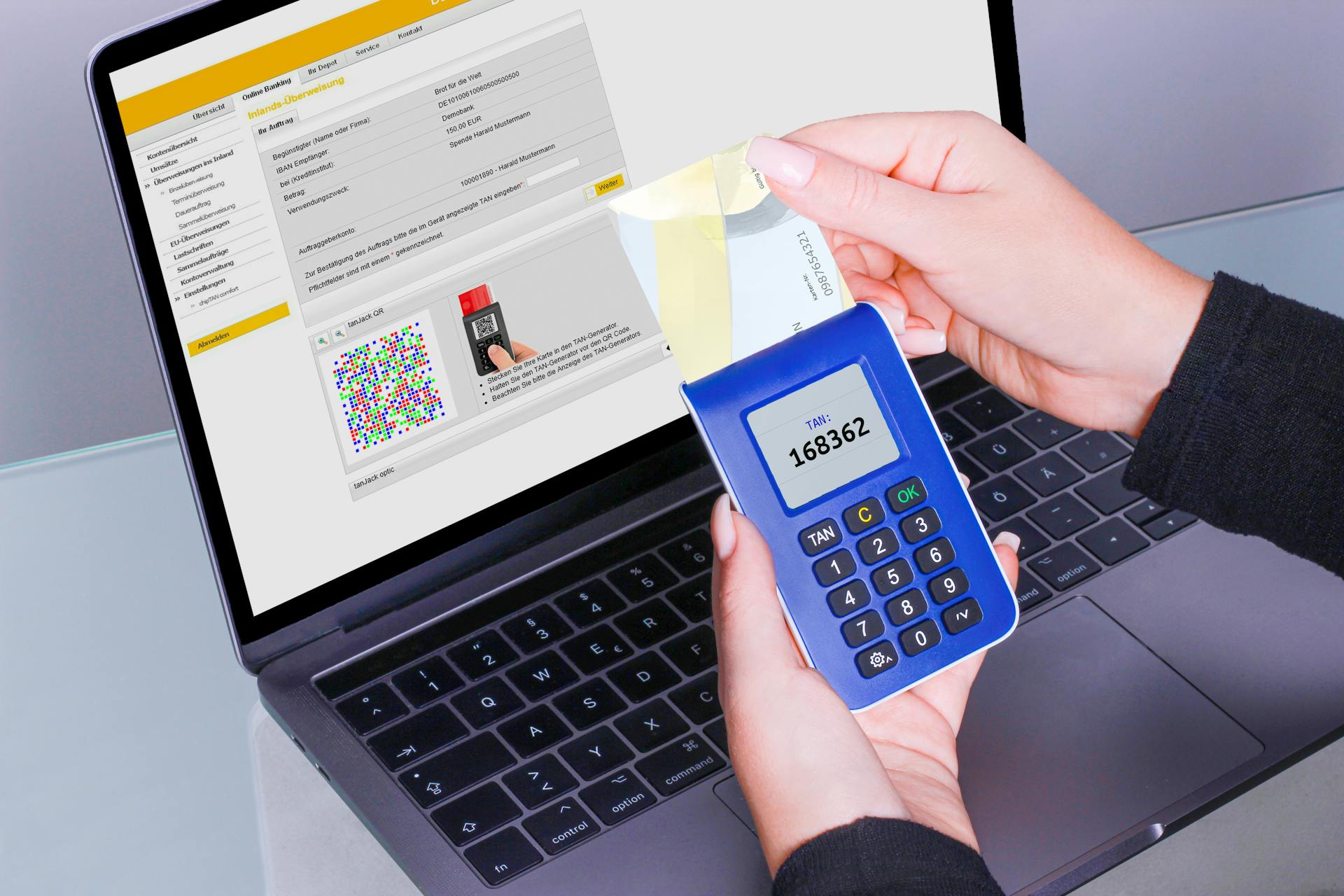
Vault Room Panels Class III are a type of modular panel that allows for easy construction of UL-rated vaults in various facilities.
These panels are made in the USA and come in four rating classes. They're perfect for banks, research labs, government facilities, and pharmaceutical or controlled substance storage areas.
Hamilton Safe Class III vault panels have earned U.L. approval by withstanding severe torch and tool attacks. They meet or exceed all insurance standards.
These panels are designed to provide high-tech, expandable security and can be used in a variety of applications.
Here are some key features of Vault Room Panels Class III:
Overall, Vault Room Panels Class III offer a reliable and secure solution for vault construction and can be customized to meet specific needs.
Door
The door to a vault is a crucial component that requires special attention. A vault door can be made in several ways, with some manufacturers using a steel cladding as the mold and pouring concrete directly into it.
For another approach, see: Bank Vault Door
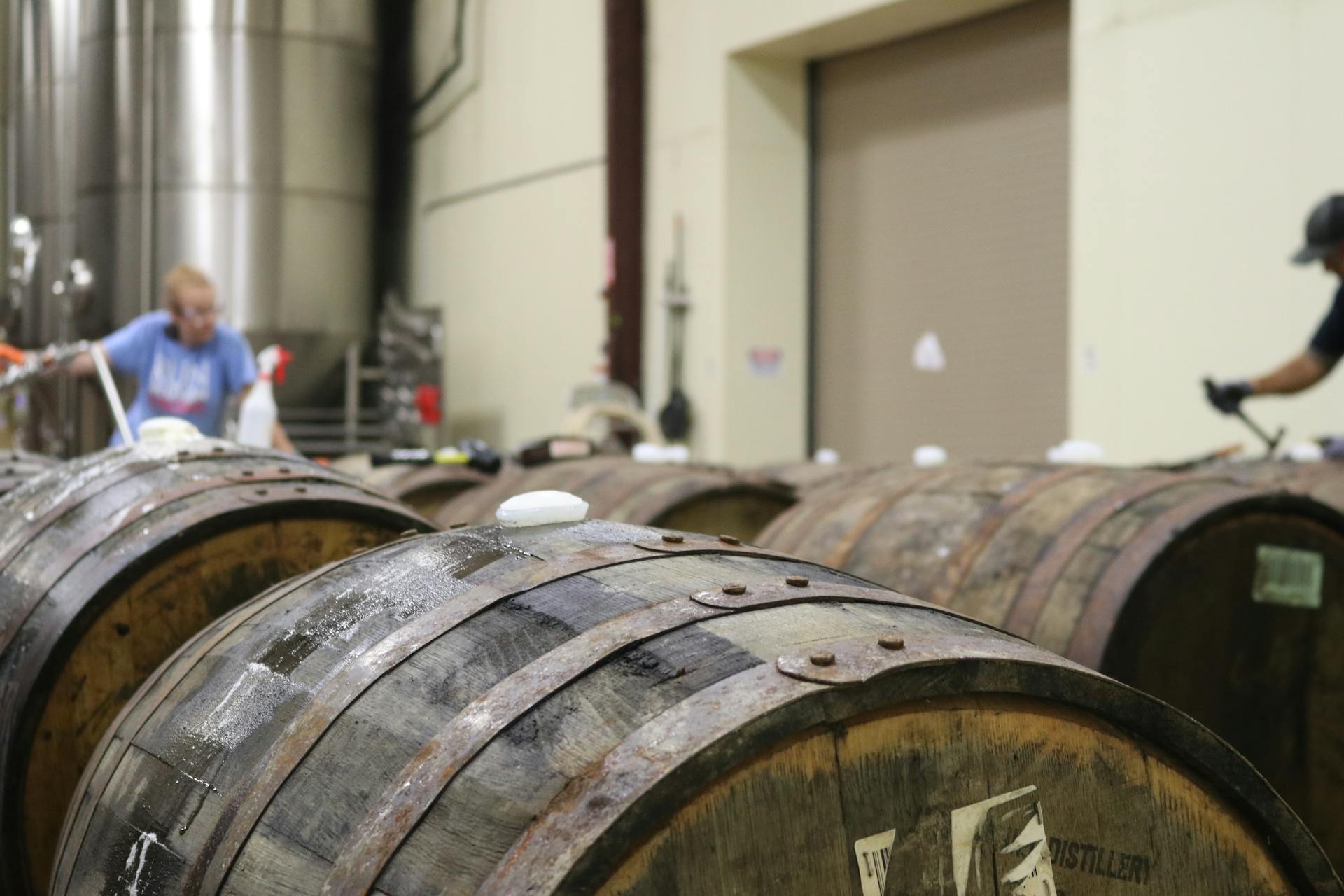
The design of the door can vary significantly, with some vaults featuring round doors that were popular in the early 20th century. These round doors are iconic images of high-security bank vaults.
A common issue with round vault doors is door sag due to weight, which can lead to maintenance problems. This is one reason why round doors fell out of favor.
A day gate is a second door inside the main vault door frame that provides limited vault protection while the main door is open. It's often made of open metal mesh or glass, intended to keep casual visitors out.
Standards and Compliance
In Europe, the testing regime for burglary resistance is covered under the auspices of Euronorm 1143-1:2012, which assures a common view of penetrative resistance to forcible attack.
This standard covers burglary resistance tests against free-standing safes and ATMs, as well as strongrooms and doors. It tests for resistance to breach the vault, with penetration success measured as partial (125mm diameter hole) or full (350mm diameter hole).
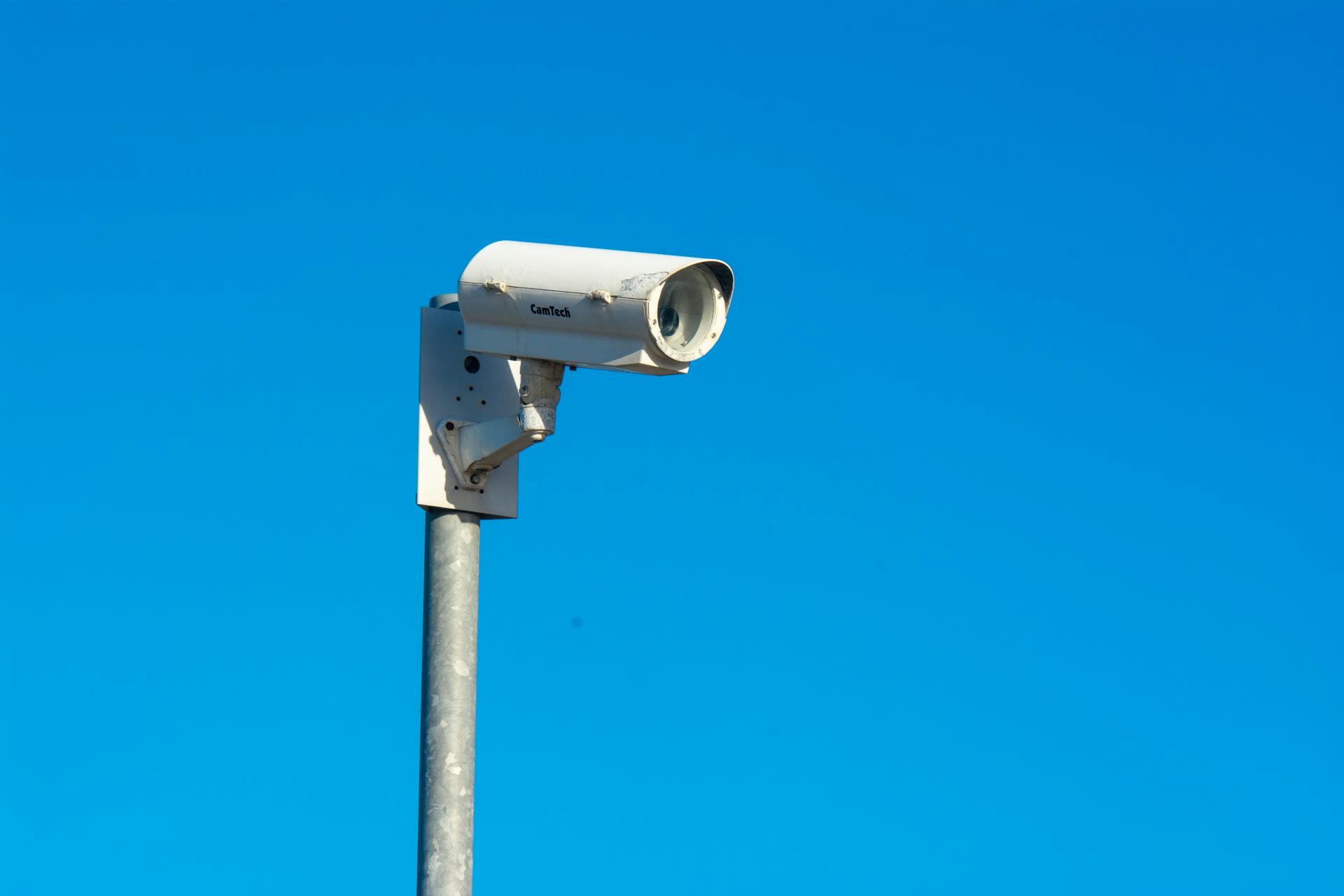
The standard assigns a resistance grade (0 to XIII) with two extra resistance qualifiers for the use of explosives and core drills. It considers only the time actually spent working, excluding setup, rests, etc.
Here's a breakdown of the resistance grades and their corresponding values:
International Vault, a provider of physical security solutions, meets specific General Services Administration (GSA) and Military Handbook certifications for modular vaults, vault doors, and pre-assembled modular armories.
US Resistance Standards
In the US, quality control for vaults is overseen by Underwriters Laboratories, Inc. (UL) in Northbrook, Illinois.
UL rates vaults based on their resistance to mock break-in attempts, using common hand tools, power tools, and cutting torches. A breach is defined as a 96 square inch hole or disabling of locking bolts.
Only active working time is counted, excluding setup, breaks, and other non-working periods. UL's standard does not test resistance to thermal lance or explosives.

The UL-608 standard applies to the door and all vault sides, and separate standards cover locks, ventilation, and alarms. This ensures that vaults meet rigorous safety and security standards.
Here's a breakdown of the UL-608 standard's rating classes:
This rating system helps ensure that vaults meet specific security standards, providing customers with a clear understanding of a vault's resistance to break-in attempts.
Government Standards
Government Standards are a crucial aspect of ensuring the security and integrity of facilities, especially in high-risk environments like government and military agencies. International Vault meets specific General Services Administration (GSA) and Military Handbook certifications and requirements for its products.
The company's products must pass Underwriters Laboratories (UL) testing before achieving GSA certification, demonstrating its commitment to meeting the highest standards. International Vault offers turnkey solutions for modular vault construction, meeting the Minimum Construction Requirements detailed in section 5.4 of the Military Handbook.
For Class A Maximum Protection vaults, forced entry penetration attacks are not practical at low and medium threat levels, providing an added layer of security. Class B Adequate Protection vaults, on the other hand, can withstand low forced entry penetration attacks and medium penetration attacks for 4 to 10 minutes.
Curious to learn more? Check out: Moneygram Data Breach Protection
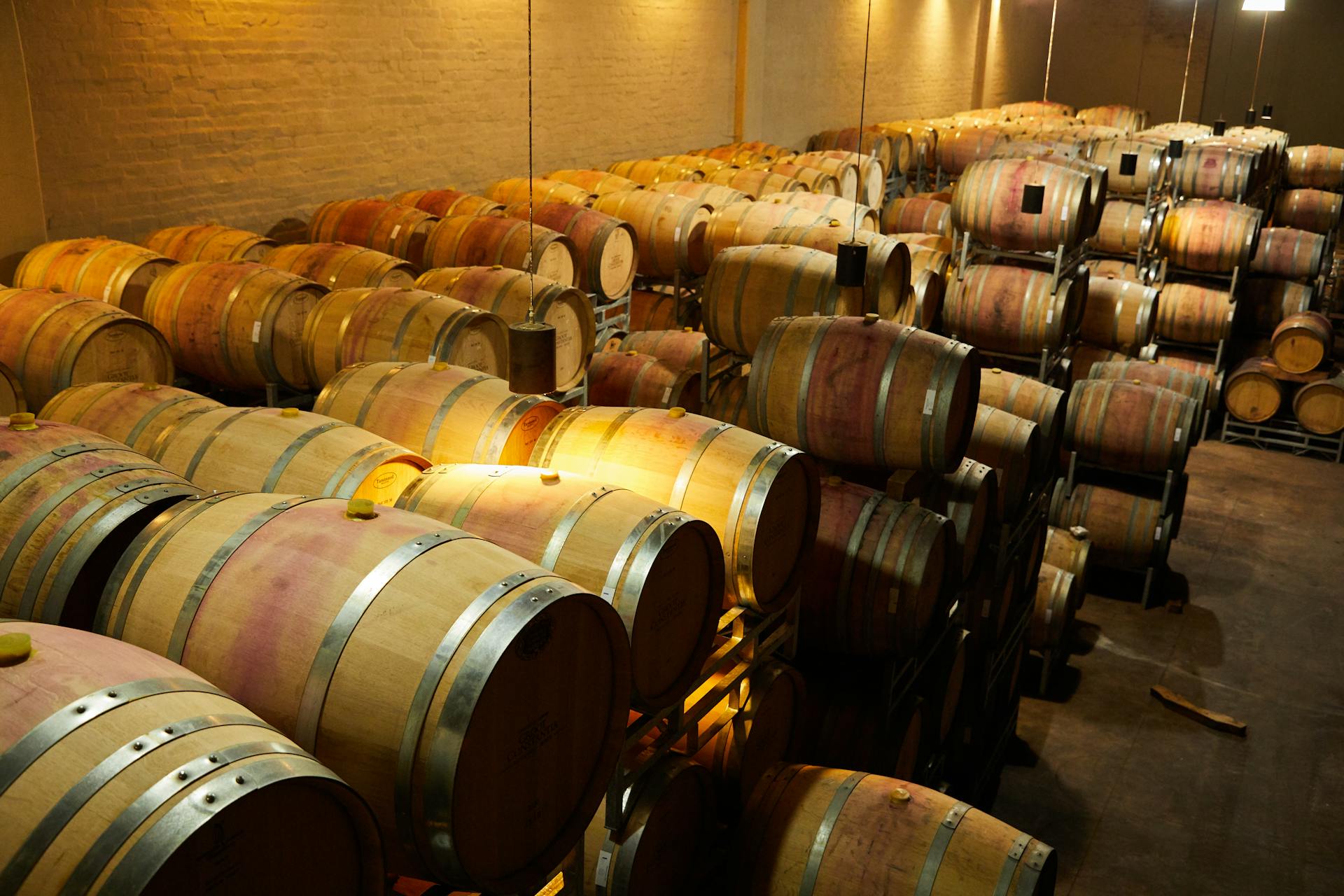
Both Class A and B Vault specifications require vault doors and frames meeting Class 5 federal specification AA-D-600C. International Vault is the only company in the world making a lightweight modular panel meeting GSA certification, offering a unique solution for facilities with space constraints.
Here are the Military Handbook ratings for penetration threats:
International Vault offers a range of customizable vault solutions meeting Military Handbook requirements, including MegaCrete Vaults, Pre-Assembled Modular Armories, Lightweight Vaults, and Scimitar Vault Doors.
Frequently Asked Questions
Do bank vaults still exist?
Yes, bank vaults still exist in modern banking systems, but their design and purpose have evolved to accommodate changing security needs and customer requirements. Today's bank vaults often contain safe deposit boxes, teller cash drawers, and other secure storage for valuable assets.
What is a bank vault called?
A bank vault is also known as a strongroom, a secure storage space designed to protect valuables from theft and burglary. Typically located in a basement, strongrooms were a staple of secure facilities in the 1800s and 1900s.
How much does a vault room cost?
The cost of a vault room varies from $8995 for a basic model to $9875 for a more advanced version with additional features. Prices may also include custom interior options.
Featured Images: pexels.com


